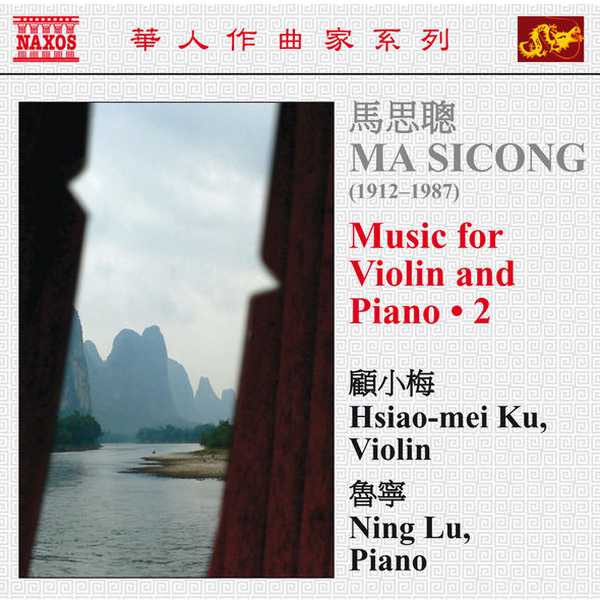
Composer: Ma Sicong
Performer: Hsiao-mei Ku, Ning Lu
Format: FLAC (tracks)
Label: Naxos
Release: 2010
Size: 291 MB
Recovery: +3%
Scan: yes
01. Spring Dance
02. Rondo No. 2
03. Melody
04. Dance of Autumn Harvest
Violin Sonata No. 3
05. I. Moderato
06. II. Allegro vivace
Gaoshan Suite
07. I. Sacrifice
08. II. Drinking
09. III. Reed
10. IV. Battle Dance
11. V. Calling Back Spirits
12. VI. Dance of Good Year
13. Rondo No. 3
14. Ballade
15. Rondo No. 4
Chinese composer Ma Si-cong (with the accent on the “Si” especially pronounced, to avoid confusion with another violinist/composer better known for his political activities) was one of China’s most gifted composers of classical music and revered as a teacher. The Cultural Revolution of the 1960s and ’70s brought him into conflict with the aforementioned violinist and composer — Mao TseTung or ZeDong — and sent Ma packing to the U.S. at night on a freight ship. Ma died a fish out of water in the U.S. and was reviled in some quarters as a traitor and coward, though since his death there has been a concerted effort in China to reclaim his work, which is absolutely central to Chinese concert violin literature. Like its companion volume, this Naxos release, Ma Si-cong: Music for Violin and Piano 2, once again brings the talents of Chinese violinist Hsiao-mei Ku, once a student of Ma, to bear on his output, and if anything it is better than the first volume.
The opening Spring Dance (1953) grabs one’s attention right away through its lush harmonies and extremely virtuosic writing for the violin; Melody (1952) demonstrates Ma’s familiarity with modern Western harmony and is striking for its occasional use of unprepared dissonances in the piano part. Pianist Ning Lu provides a superlative accompaniment, working with Ku’s stirring ebb and flow to create an air of genuine excitement. Ma’s artistic sensibility — including such admirable qualities as graciousness, sparkling rhythm, dynamic drive, and soulful melodicity — never changed despite his difficulties; his Violin Sonata No. 3 from his U.S. period of the 1980s is cut of the same cloth as his works from the 1940s and ’50s. For some listeners the idea of a composer sidestepping the issue of forward development in his/her work over time might be a turnoff, but when you have such an original and well-defined sound as Ma demonstrates in piece after piece, who would want it to change? Violinists of all kinds will find much nourishment in Naxos’ Ma Si-cong: Music for Violin and Piano 2, though most others should find it fulfilling, as well.